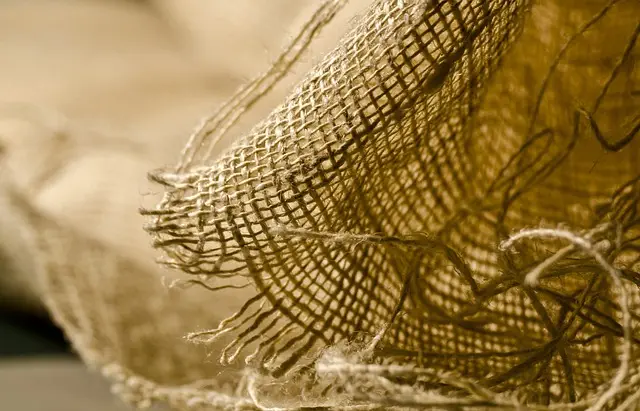Kratom, derived from the Southeast Asian Mitragyna speciosa tree, has garnered attention for its potential role in managing muscle soreness. Its key compounds, mitragynine and 7-hydroxymitragynine, act on opioid receptors to provide natural pain relief, making it a viable alternative to traditional medications for those experiencing discomfort from exercise, injuries, or chronic pain. Traditional uses in its native regions support this, with scientific studies and anecdotal evidence corroborating its benefits. Kratom may not only offer acute pain relief but also aid in musculoskeletal recovery through relaxation and potentially anti-inflammatory properties. However, it's important to use kratom responsibly, following recommended dosages and consulting healthcare professionals to ensure safety and efficacy. The variability in individual responses highlights the importance of personalized use for optimal results when considering kratom as a natural remedy. Kratom's potential benefits for muscle soreness relief are being studied further, with ongoing research promising a broader understanding of its health contributions.
Discover the potential of kratom as a natural solution for muscle soreness relief. This article delves into the multifaceted benefits of kratom and how it can be seamlessly integrated into your post-workout recovery regimen. Explore the natural remedies offered by kratom to ease aching muscles, and understand its role in enhancing overall muscle health. Uncover the science behind kratom’s efficacy and learn how it might complement your wellness practices without the need for traditional pain medication. Join us as we navigate the promising landscape of kratom benefits for muscle soreness relief.
- Unraveling the Benefits of Kratom for Muscle Soreness Relief
- Exploring Natural Remedies with Kratom to Ease Aching Muscles
- Integrating Kratom Supplements into Your Post-Workout Recovery Routine
Unraveling the Benefits of Kratom for Muscle Soreness Relief

Kratom, a tropical evergreen tree native to Southeast Asia, has garnered attention in various health and wellness circles for its potential benefits, particularly in managing muscle soreness. The active compounds found in kratom leaves, known as alkaloids such as mitragynine and 7-hydroxymitragynine, are believed to interact with the body’s opioid receptors, which can lead to pain relief effects. For individuals seeking natural remedies with kratom for muscle soreness, the plant may offer a promising alternative to conventional over-the-counter medications. The analgesic properties of kratom have been traditionally used by locals in its native regions to alleviate discomfort and enhance physical endurance. Moreover, anecdotal evidence and emerging research suggest that kratom can be beneficial for those experiencing muscle soreness from exercise, injury, or chronic pain conditions.
The use of kratom benefits extends beyond acute muscle soreness; it may also contribute to overall musculoskeletal health by potentially aiding in the recovery process after intense physical activity. By promoting a state of relaxation and reducing inflammation, kratom can help users manage their pain levels effectively while avoiding the side effects often associated with pharmaceutical options. It’s important for potential users to approach the use of kratom with caution, adhering to recommended dosages and consulting healthcare professionals before integrating it into a wellness regimen. As with any supplement or natural remedy, individual responses can vary, and personalized guidance can ensure safe and effective use for muscle soreness relief.
Exploring Natural Remedies with Kratom to Ease Aching Muscles

Kratom, a tropical evergreen tree native to Southeast Asia, has garnered attention in various natural remedy circles for its potential health benefits, including as a means to ease muscle soreness. The active compounds found in kratom leaves, known as alkaloids such as mitragynine and 7-hydroxymitragynine, are believed to interact with the body’s opioid receptors, which can lead to pain relief. For those seeking natural remedies with kratom for muscle soreness, it is essential to understand the different strains available and their specific effects. For instance, certain strains like Maeng Da and Bali are often favored for their analgesic properties, potentially aiding in the reduction of discomfort associated with rigorous exercise or strenuous activity.
The use of kratom as a supplement for muscle soreness relief is rooted in traditional practices within its regions of origin. Modern scientific research is still expanding our understanding of how this plant can be beneficial. When incorporating kratom into one’s wellness routine, it is crucial to approach its consumption with caution and adhere to recommended dosages to avoid potential side effects. Additionally, individuals should consider consulting healthcare professionals before integrating kratom as part of their muscle soreness management strategy, especially if they have underlying health conditions or are taking other medications. As a natural alternative to over-the-counter pain relief options, kratom benefits continue to be explored for its potential role in promoting overall well-being and providing relief from muscle aches.
Integrating Kratom Supplements into Your Post-Workout Recovery Routine

Integrating kratom supplements into your post-workout recovery routine can be a strategic approach to alleviate muscle soreness, leveraging the potential kratom benefits for athletic performance and pain management. Kratom, derived from the leaves of the Mitragyna speciosa tree, has been traditionally used in Southeast Asia for its various health-promoting properties. When it comes to post-exercise recovery, some individuals report that certain kratom strains can offer natural remedies with kratom that may help reduce muscle pain and inflammation. For instance, strains like Bali or Maeng Da are often favored for their soothing effects, which might aid in the relaxation of muscles and provide a sense of well-being after intense physical activity.
It’s important to approach the use of kratom with caution, as the FDA has not evaluated the claims associated with its consumption. Additionally, dosage plays a critical role in determining the effectiveness of kratom for muscle soreness relief. Users should start with a low dose and gradually increase it based on personal tolerance and the advice of a healthcare provider. Moreover, integrating kratom into your recovery regimen should complement other established practices such as proper hydration, nutrition, and rest. By doing so, individuals can potentially enhance their body’s natural healing processes and expedite muscle recovery, all while exploring the kratom benefits for pain relief in a natural way. Always prioritize safe practices and consult with healthcare professionals before making any changes to your post-workout routine or incorporating new supplements like kratom into your regimen.
In conclusion, the exploration of kratom’s benefits for muscle soreness relief presents a promising alternative for those seeking natural remedies beyond traditional pain management options. The integration of kratom supplements into one’s post-workout recovery routine can be a beneficial addition to alleviate muscle discomfort and aid in recuperation. As with any supplement, it is advisable to consult healthcare professionals before incorporating kratom into your regimen, ensuring safe and effective use. The potential of kratom as a natural remedy for muscle soreness underscores its growing recognition in wellness circles. With further research, the role of kratom in promoting health and well-being may be further elucidated, offering an array of options for those looking to enhance their recovery process naturally.






